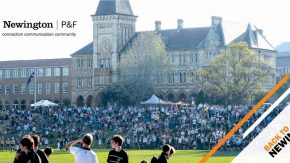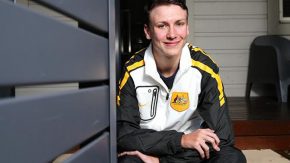Talking about students behind their backs
Should I be concerned (or a bit put-off?) that the highlight of the last month for the boys in my Year 12 Economics class was the recent June long-long weekend? Should I be worried that the promise of an extra day away from school seemed more exciting to them than the lesson with me that they would miss? They can’t have meant it, surely.
Each year these days pop up a few times on the calendar. They are a time for the whole school staff to work together on the big-picture initiatives that shape learning and teaching at the College. They are a chance for everyone, from Kindergarten teachers to those working with Extension Year 12 classes, to collaborate on the programs that shape our boys’ experience at school.
Friday June 10, the day that gave the boys the long-long weekend, brought the teaching staff together to reimagine what curriculum can look like. The day was opened by Adjunct Professor Erica McWilliam from QUT who asked us to consider whether the approaches schools take to working with students are products of tradition, or initiatives that have the best interests of student learning at heart.
Her underlying premise lies at challenging the role of a teacher in a classroom. Teachers are sometimes characterised as individuals who direct learning from the front of a room and who, like an ATM, have stores of knowledge inside them and use the classroom to allow students to withdraw it. (I think here, of recent Education Ministers calling for a focus on ‘direct instruction’ in the nation’s classrooms). This ‘sage on the stage’ view of what it means to be a teacher is at one end of the spectrum. The alternative view, at the other end, is where teachers are portrayed exclusively as co-collaborators with students, being facilitators in the classroom and using student-centred techniques. Professor McWilliam refers to this view of teachers as ‘the guide on the side’.
The truth, and the place where teachers are most effective in driving student achievement, we all know is somewhere in-between, or the meddler in the middle.
“Do you get wetter in a rainstorm by standing or walking?” This deceptively simple question opens up a raft of experimental possibilities. The Sage-on-the-Stage is likely to give the answer and expect students to learn it and regurgitate it at exam time. The Guide-on-the-Side may become concerned if students begin to show stress when they can’t find the solution quickly and receive praise for it. They may respond by giving lots of hints and suggestions. In doing so, they can unwittingly take the challenge out of the task. In doing everything but supply the answer, they can seem supportive, but they steal from their students the opportunity to struggle and make mistakes. The Meddler-in-the Middle does not rush to save students from the struggle that higher order thinking involves, by giving them either the answer or the template for finding it. They allow their students to experience the risks and confusion of authentic learning by allowing their students to stay in the grey of unresolvedness, supporting any and all attempts on the part of their students to experiment with possibilities in ways that put their ignorance to work. Moreover, they do not presume that the highest achievers in the class are the best learners. Indeed, they anticipate that many of the students who are on the margins of the school culture may have more to offer in terms of creative effort” – McWilliam (2009)
What are the implications for us? We all know that the role of teachers is not to simply give our boys the answers to questions, but how often do boys expect them just to tell their classes what they need to know so that they can remember it? We want our boys to become agile and critical thinkers, but we must always defend the rigour and accuracy of what we do – at no time can just any old answer or interpretation be good enough. We all want the best of both worlds for our boys, irrespective of whether they are our students or our sons.
This thinking set up the work by the Stanmore staff over the remainder of the day. They began crafting approaches to curriculum that can walk that line, with a specific focus on Years 9 and 10. Their work focussed on devising innovative units, courses and areas of study that place engaging students in academically rigorous studies and ask them to apply ideas and skills across traditional subjects and disciplines. The exciting ideas that came out of that are now on the table for 2017, and many boys can expect to see new choices and experiences being offered as electives next year. This will be a space to watch.
In the last lesson I had before the long weekend one of my Year 12 boys asked me whether or not the teachers spend all the student-free days sitting around talking about their students. Maybe not the way that he meant it, but it is nice to be able to say that was “entirely” the case this term.
Mr Trent Driver
Deputy Head of Stanmore – Academic
McWilliam, Erica L. (2009) Teaching for creativity : from sage to guide to meddler. Asia Pacific Journal of Education, 29(3). pp. 281-293. (e-print available here)






